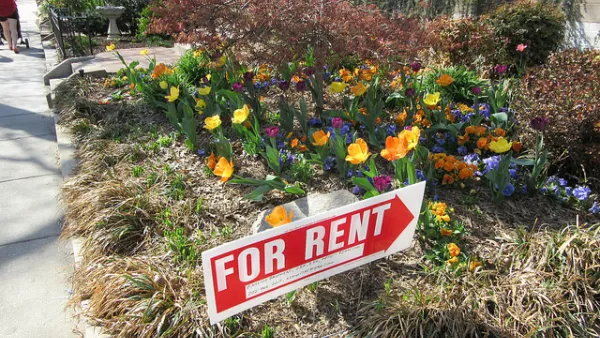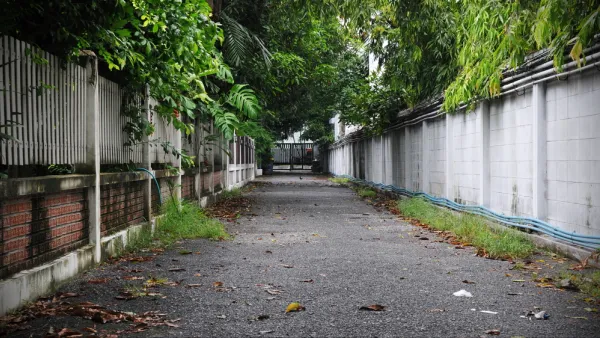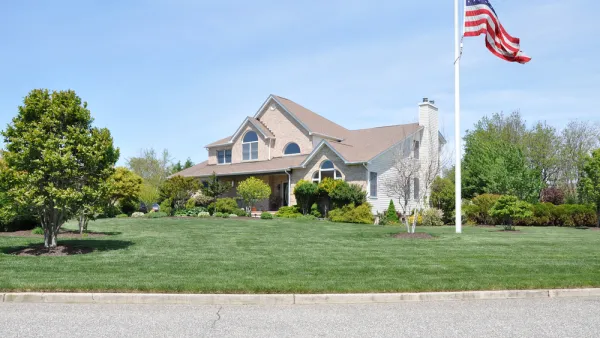Numerous popular and academic writers from the 1950s and 1960s critiqued suburban development patterns and found them wanting.
Amanda Kolson Hurley writes in Curbed about the popular and academic literature from the 1950s and 1960s on the topic of "suburban anomie." Apparently the good old days weren't quite so good after all.
Hurley explains
In the years after World War II, suburbs represented not just new places to live but a whole new manner of living, separated by more than physical distance from the big cities and small towns from which their residents hailed. Between the late 1940s and 1960, millions of Americans moved into raw neighborhoods containing people of about the same age, making about the same amount of money, starting families at about the same time. It was a social experiment unprecedented in U.S. history. The first suburbanites themselves were well aware of this. Although they felt the optimism of pioneers, they shared in the widespread anxiety that the experiment might not work, an anxiety that manifested as worries about unanticipated health effects. These ranged from the daily, cumulative frustrations of a Mary Drone to more significant problems: stomach ulcers, heart attacks, anxiety, depression, sexual dysfunction, and juvenile delinquency.
FULL STORY: Welcome to Disturbia

Analysis: Cybertruck Fatality Rate Far Exceeds That of Ford Pinto
The Tesla Cybertruck was recalled seven times last year.

National Parks Layoffs Will Cause Communities to Lose Billions
Thousands of essential park workers were laid off this week, just before the busy spring break season.

Retro-silient?: America’s First “Eco-burb,” The Woodlands Turns 50
A master-planned community north of Houston offers lessons on green infrastructure and resilient design, but falls short of its founder’s lofty affordability and walkability goals.

Test News Post 1
This is a summary

Analysis: Cybertruck Fatality Rate Far Exceeds That of Ford Pinto
The Tesla Cybertruck was recalled seven times last year.

Test News Headline 46
Test for the image on the front page.
Urban Design for Planners 1: Software Tools
This six-course series explores essential urban design concepts using open source software and equips planners with the tools they need to participate fully in the urban design process.
Planning for Universal Design
Learn the tools for implementing Universal Design in planning regulations.
EMC Planning Group, Inc.
Planetizen
Planetizen
Mpact (formerly Rail~Volution)
Great Falls Development Authority, Inc.
HUDs Office of Policy Development and Research
NYU Wagner Graduate School of Public Service




























